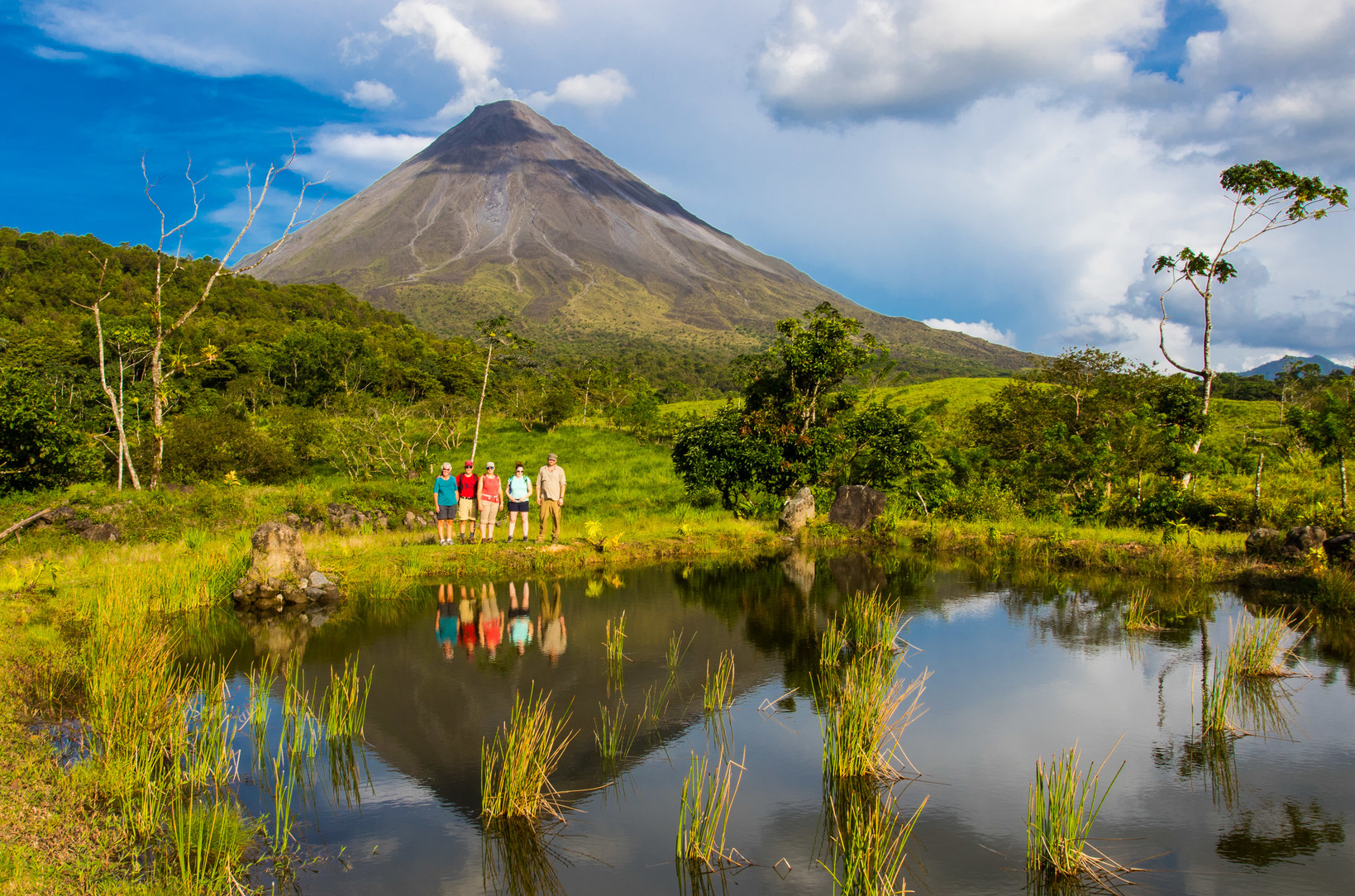Planning is essential to make the most of a trip to Costa Rica. Not that the destination is complicated: traveling to Costa Rica is even easy, compared to other destinations in Central and South America. But if you want to guarantee an unforgettable trip in the best “Pura Vida” style, there are some tips for traveling in the country that you should know.
Here are 6 tips to help make your trip to Costa Rica the best it can be. We include cultural aspects, money, food, transportation and many general how-to's.
1. What is Pura Vida
When you land in Costa Rica, you will start hearing (and reading) “Pura Vida” everywhere. And there couldn't be a more appropriate term to define the lifestyle of the “Ticos”, as Costa Ricans are called.
Pura Vida is a way of greeting, of saying hello, goodbye – or anything that has a positive intention – you can use it in different ways!
So now you know: when you start your trip to Costa Rica, put a smile on your face and Pura Vida.
2. What is the money in Costa Rica
The official currency of Costa Rica is the Colon. Despite having its own currency, the country uses both colon and US dollars. It is possible to withdraw dollars at some ATMs. Some online or physical currency exchange agencies offer exchanges in Colon. You can easily pay with both currencies – what usually happens is that you pay in dollars and the change is in colon. It is worth noting that many places do not accept US$50 or US$100 bills. The ideal is to walk with smaller notes. Also, check that when paying in colon that the exchange rate is correct.
Is traveling to Costa Rica expensive?
One of the first things you need to know is that traveling to Costa Rica is not cheap fun. Don't be fooled into thinking that, being in Central America, the country will have a low cost of living like its neighbours in Nicaragua. In fact, tourism pricing is often on par or a bit less than pricing in Canada and the United States.
But what weighs most on your pocket are the activities and trips you will take around the country. Nature here is plentiful, but it's not free. Virtually all national parks charge admission – which can vary from 12 to 20 dollars or up to $ 100 for some of the private reserves.. While self-guided trails are plentiful and often signed, the advantages of traveling with a guide outweigh the self-discoveries. They know the best spots to highlight for birds, monkeys, plants and scenic wonders.
3. Climate: when is the best time to travel to Costa Rica
Costa Rica has a typically tropical climate, but there are some specific microclimates that don't allow us to generalize things around here. To begin with, the country has two coasts: the Pacific and the Caribbean – and the rainy season is different on both. And despite the constant heat prevailing in the country, there are some destinations that experience milder temperatures – or even very low!
Monteverde for example is a cooler place. And volcanoes can be quite cold, especially in the early mornings or late afternoons! A boat trip on the Caribbean or the Pacific Ocean can be breezy. Bring a day pack, extra water, and wear layers that can be added or taken off for comfort.
But generally, the period between late November to mid-April is usually the best time for tourism in Costa Rica.
The rainy season usually lasts from the beginning of May to the end of October with the months of September and October having the most rain. But if you can't escape the rainy season, don't worry. It is precisely at this time that prices are lower and wildlife is at its peak – the chances of seeing animals are even greater!
In addition, days in the rainy season tend to be sunny during the day, with rain coming later in the afternoon. In other words, you can still enjoy it!
4. How to get around during your trip to Costa Rica
4.1. Pre-arranged transfers
Companies like ours specialize in pre-arranged transfers between the destinations you want to visit. Additionally, any tour can be added to your trip. We can arrange a transfer between practically any destination in Costa Rica, many of which will include stops along the way to see attractions or to enjoy local meals and culture.
4.2. Rented car
Rentals are available in Costa Rica and are cheaper than paying for a transfer or internal flights, in addition to being free to stop wherever you want for as long as you want, adjust your itinerary, etc. This service you must do on your own, and know you must take out “third-party insurance” - this is mandatory.
4.3. Plane
Domestic flights are quite reasonable and can often be one of the best ways to travel around Costa Rica.
As the country is small, there are flights of just 30 minutes between some destinations, which would take about 4 hours by land. Some of the local airlines are Sansa, Skyway, TAC, Aerobell, and Green.
Important: The main airports in the country are in San José and Liberia, but several cities have local airports.
And it is also worth considering that flights in high season (December to April) are sold at a premium.
4.4. Public transportation
If you really want to save money, you can travel by local bus. Departing from the capital San Jose, you can find buses to all destinations in the country. Unfortunately, this option does not work well for those who have little time available for travel, as bus trips are quite long – the same stretch can take up to twice as long to travel, compared to a trip by car. And if you are going to travel in high season, it is recommended to buy your ticket in advance.
5. What to pack for a trip to Costa Rica
Comfort and simplicity are the watchwords when packing for a trip to Costa Rica. The vast majority of destinations involve beaches, waterfalls, and contact with nature. Pack your water shoes and comfortable runners. Consider light and fast-drying clothes – the climate is very humid here, which makes it very difficult to dry things.
6. Food in Costa Rica
Get ready to eat really well in Costa Rica. You will see restaurants of various international specialties throughout the country, mainly in the more touristic regions. However, it is precisely in these locations that the price tends to be even higher. For a typical and cheaper meal, go to a “soda”: these are local restaurants, with a very simple structure that serve the best typical dishes that you will taste. In all the destinations we passed we found sodas, including on the roads.
We hope these tips will help you enjoy your stay in Costa Rica. Now pack your bags and travel to Costa Rica! Do you have any other Costa Rica travel tips that you consider important? Leave it in the comments!

